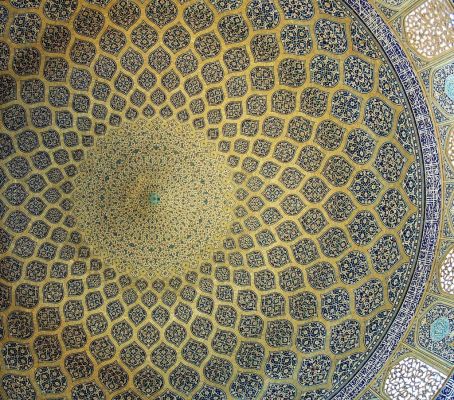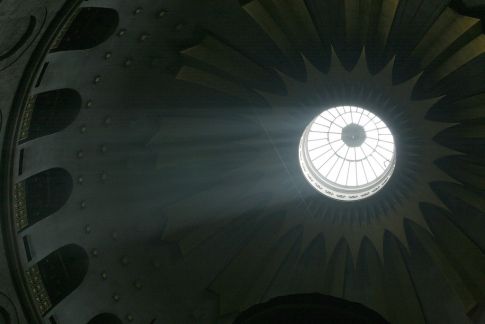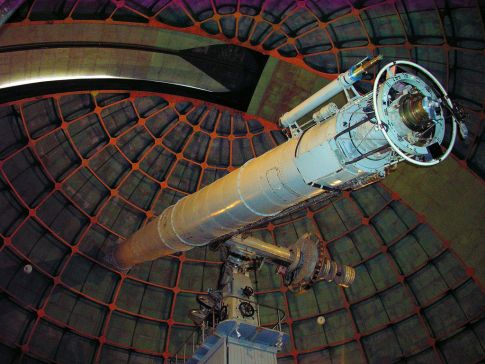
I am posting this month from the Holy Land, in an area known locally as the "Galile" but more famous to westerners as the region surrounding the Sea of Galilee. The "sea" is, in fact, a large freshwater lake, the lowest of its kind on earth. Its various names--Galile, Kinneret, Lake of Gennesaret, Sea of Tiberias--testify both to its significance in antiquity and to the multiple historical streams that feed the region. To the scientific eye, the lake is a particularly beautiful manifestation of the Jordan Great Rift Valley, a structure brought about by the split between the Arabian and African tectonic plates. Looking across its azure surface from the west I can see the rocky steeps of the Golan Heights; beyond them, just perceptible after sunset, appear the lights of Syria, and the greater middle east.
Moving around Israel this week I have been struck again and again by the significance of domes to human cultural expression. In the "Old City" section of Jerusalem, still kept behind massive stone walls, the skyline is wholly dominated by the Dome of the Rock, refurbished in glaring gold recently by King Hussein of Jordan. In the Christian Quarter of the divided city believers gather at the double-domed Church of the Holy Sepulcher (itself divided among Eastern Orthodox, Armenian Apostolic, Roman Catholic and other Christian denominations, an arrangement not without its own tensions). With a little hunting--the door is tiny and all but concealed by Arab market stalls--I was able to discover the silver-domed Church of St. John the Baptist, built in the 5th century, rebuilt in the 11th by Crusaders in one of the many periods during which Jerusalem was being overthrown. In a fanciful way one might see the unending struggle for possession of this city as a debate over domes.
Traveling north from the place once called the Center of the World one finds Jerusalem's architectural predilection is not singular: domes appear in every Arab village, most often accompanied by minarets, gesturing skyward as if in longing. (Depending on their size, some villages have two, or three, or - once -- as many as six visible mosques.) More recent religions have also found Israel: in Haifa, adherents of the Baha'i faith have erected their own dome at the "Shrine of the Bab."

In Tzfat, a Kaballistic Jewish community just north of the Sea of Galilee, I peered into the domed interior of an ancient synagogue and reflected that regardless of origin these structures are almost always painted with stars. At one time the pinnacle of architectural ability--one thinks of the great Duomo in Florence---domes replicate the apparent arch of the sky, what for all but the most recent human history was thought to be something like an enormous inverted bowl, or possibly a transparent sphere studded with lights.
And again I am struck by that seemingly universal inclination skyward we, as a species, inherit. Up there, the Pythagoreans dreamed in nearby Greece, moved the timeless perfections of mathematics. Up there, various sages of the Middle East cried, dwelt the divine. In Jewish tradition, Elijah rode to the heavens in a flaming chariot; for Muslims, Mohammad took a night journey to al-Aqsa -- now a steely gray dome -- before rising to the sky on a winged horse. The theme seems to be that we build domes to commemorate some moment of cosmic identification, a transcendent connection between humanity and the broader universe.
I am moved by these structures, by the aspiration they imply -- and am led to reflect that our generation has a new type of cosmic dome as well: that of the observatory. Though we have too often allowed scientific inquiry to become passionless in the public mind, these modern domes are, to the ones built atop ancient mountains, more than a little bit akin. They are part of the overall human quest for "gnosis," or understanding; they bring us together as a species intent on discovering our place in the cosmic. They inspire -- or should inspire -- a grand sense of purpose and discovery. I would submit that we fail as moderns if we think of our holy places, from whatever tradition we hail (if any), as expressing a connection to profundity -- while regarding our observatories as "mere machines," the province of a fusty few.
To my eye, the domes of the Keck, ESO and elsewhere are as much a cause for deep reflection as the various monuments to world faiths that fill this region. And, like them, their interiors are filled with stars.
